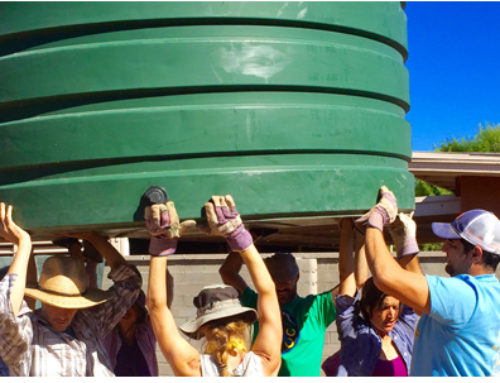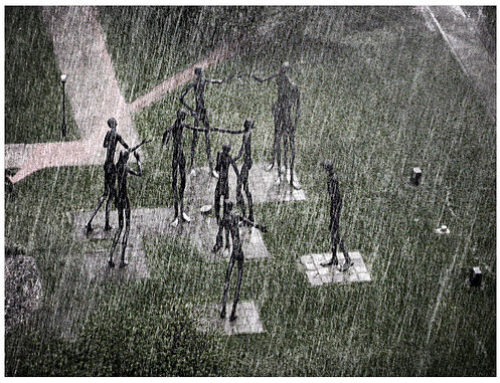-
Yet more good news from SoCal, as the City of Los Angeles moves forward with adopting an Low Impact Design (LID) ordinance. Go L.A.! I especially like this quote from Board of Public Works Commissioner Paula Daniels, responsible for drafting the LID ordinance: “We are one final step away from passage of an ordinance that will embody the shift in thinking that we have been working in at the Department of Public Works, bringing Los Angeles into the 21st Century way of stormwater management. “With this ordinance, we will be officially recognizing that rainwater is too precious a resource to waste.” I’ll say!
LOS ANGELES (December 23, 2010)—The Los Angeles City Council recently passed, by unanimous consent the Low Impact Development Ordinance (LID) which had been developed by the Bureau of Sanitation at the direction of the Board of Public Works. The proposed ordinance is now with the City Attorney’s Office for review and will come back to the City Council for adoption in a few months.
“We are one final step away from passage of an ordinance that will embody the shift in thinking that we have been working in at the Department of Public Works, bringing Los Angeles into the 21st Century way of stormwater management,” commented Board of Public Works Commissioner Paula Daniels, responsible for drafting the LID ordinance. “With this ordinance, we will be officially recognizing that rainwater is too precious a resource to waste.”
LID provides for development projects to address runoff by building in a manner that captures rainwater at its source utilizing natural resources including rain barrels, permeable pavement, rainwater storage tanks, infiltration swales or curb bumpouts to contain the water.
The City’s new LID ordinance will require all of the rainwater from a ¾-inch rainstorm to be captured, infiltrated and/or used on most developments and redevelopments where more than 500 square feet of hardscape is added. Single family residences only need to comply in a more simple way, with a choice of options from a manual that is being developed by the Bureau of Sanitation.
“Clean water is a top priority for the City and Bureau of Sanitation. I am very proud of our team for reaching out and working with the environmental, business and community groups to propose an ordinance that is business friendly and meets the desired environmental and water quality benefits. With this ordinance and many of our green projects and water quality initiatives, we are on the way to fulfilling Mayor Villaraigosa’s vision of making Los Angeles the greenest and cleanest big city in America,” said Enrique C. Zaldivar, Director of the Bureau of Sanitation.
“When rainwater is allowed to flow down our streets, it collects pollutants, trash and bacteria, which ends up in our waterways. Rather, when we put nature to use, ultimately, we can improve water quality and recharge our groundwater,” said Daniels, who leads a number of clean water initiatives. “Southern California imports a great deal of its water making conservation and water quality essential. The LID ordinance will help us meet our Clean Water Act requirements and to reduce our reliance on imported water.”
About City of Los Angeles Department of Public Works
Since 1906, the Department of Public Works has led the way to advance and establish a vital foundation of infrastructure facilities, resources and services that enable the City of Los Angeles to be an international economic engine that enables access to world markets and serve more than four-million residents in a 468 square mile geographic area.For more than 100 years, as the city has grown to be the second largest in the nation, the Department of Public Works has met federal, state and local regulations, and focused on resolving the infrastructure issues and challenges that invisibly but critically manifest themselves as uninterrupted everyday conveniences. The results have been safety and security, economic growth, enhanced quality of life and environmental protection.
With resources from the Bureaus of Contract Administration, Engineering, Sanitation, Street Lighting and Street Services, and the Office of Community Beautification, the Department of Public Works delivered accomplishments and long-term value in infrastructure projects and programs.






